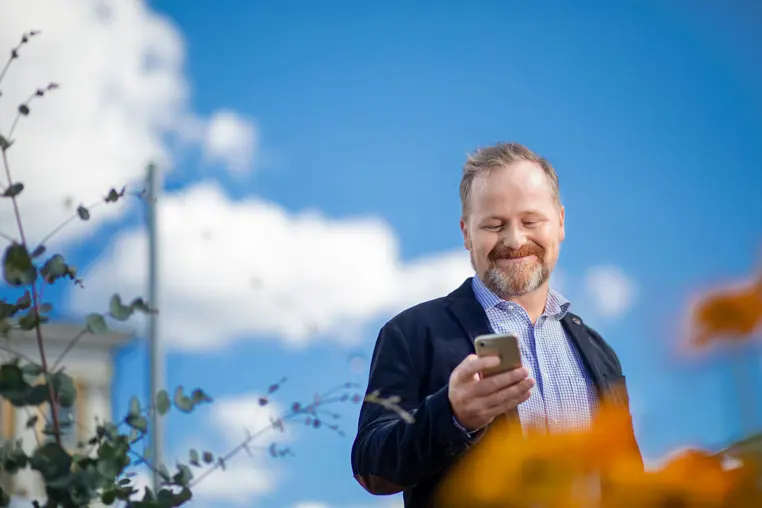Finland Q2 2025 Business Snapshot: A springboard for innovation and growth
We open up the latest investments, innovations, and partnerships shaping Finland’s future-ready industries – and why global companies are taking notice.
News 22.9.2025

Despite global uncertainty, Finland continues to demonstrate why it’s one of Europe’s most compelling destinations for innovation-driven investment. In Q2 2025, the Nordic nation accelerated its green transition, expanded its space and defense capabilities, and deepened its role in shaping the future of AI, the circular economy, and sustainable manufacturing.
From Arctic hydrogen hubs to icebreakers and quantum computing advances, Finland is combining technical expertise with pragmatic policymaking to create fertile ground for international business growth. Here’s a look at the standout developments from Q2.
Finland’s green transition surging
Global attention is turning toward Finland’s green transition. The OECD recently highlighted Finland’s exceptional potential, with the Confederation of Finnish Industries, which maintains the national green investment data window, noting that the country has surpassed €300 billion in its project portfolio.
The confederation also reported that Finland will complete approximately €8.5 billion in green transition investments this year alone. Wind power leads the way, and renewable electricity production plays a crucial role by enabling other electricity-intensive industrial investments to move forward.
In Western Finland, Koppö Energia secured €85 million in EU funding for a net-zero hydrogen and synthetic methane facility – one of the European Commission’s 15 flagship clean tech projects. This investment complements Finland’s broader strategy to become a leader in clean industrial inputs, including hydrogen, synthetic fuels, and battery materials.
Strategy meets sustainability in Finland
The OECD has recognized Lapland as one of Europe’s most strategically important sources of critical minerals like cobalt and graphite, which are essential for batteries and defense technologies. Central to this development is the Sakatti mining project, located in Sodankylä, Lapland.
Despite environmental concerns, the project was granted fast-track status by the EU, reflecting its strategic importance. As Finland’s then Minister of Economic Affairs Wille Rydman emphasized, “All the conditions exist for the project to be implemented in a way that is both economically viable and strengthens Europe’s strategic self-sufficiency, while also respecting natural values.”
In the bioeconomy sector, Finland is turning waste into wealth. A joint research project by VTT, Finland’s state-owned research and technology organization, and LUT University in Lappeenranta successfully converted forest industry CO₂ emissions into raw materials for plastics. In Joensuu, Europe’s largest biochar plant opened, producing 60,000 tons annually to replace coal in industrial use.
Finland’s industrial sector is also undergoing a green transformation. Stainless steel manufacturer Outokumpu announced a €200 million investment in its Tornio plant and opened a biocoke facility that will cut emissions by 80,000 tons annually. Sandvik, the global high-tech engineering group, received its largest-ever US order for battery-powered mining equipment.
Finland’s strategic edge from sea to space and AI
Finland’s icebreaker expertise also gained international recognition. The US and Canada are exploring deals with Finnish shipyards, and Davie Shipyard, which owns Helsinki Shipyard, expanded to Texas to facilitate transatlantic collaboration. During talks with Finnish President Alexander Stubb, US President Donald Trump reportedly referred to Finland as the “King of icebreakers.”
Finland is also investing heavily in space-based intelligence and defense technology. The Ministry of Defense announced the country’s first satellite acquisition, partnering with Finnish space company Iceye, which operates the world’s largest fleet of radar satellites. Iceye also launched a €250 million investment program to expand its global operations.
The country’s national quantum technology strategy has set out a plan to make quantum computing a new driver of growth and a tool for building a more sustainable future. It points to Finland’s strong know-how and innovation network, and stresses the need for investment and teamwork. The plan includes steps for creating a national quantum center and launching a program to support R&D.
Talks are also underway about building a new AI “gigafactory” in Finland, as part of a broader EU effort to set up five facilities across Europe. Nokia is expected to lead the Finnish project group, drawing on its long experience in data networks. If approved, the factory would give a significant boost to Europe’s AI power, making it up to four times stronger than what today’s systems can deliver.
Finnish innovation shapes everyday life
In MedTech, Finnish companies are expanding globally. Nightingale Health opened a US laboratory to offer advanced metabolic profiling services. Meanwhile, Bonalive launched a new factory in Turku to produce antibiotic-free bone treatment materials used in war zones.
Finland’s leadership in the circular economy continues to grow, with two innovative cleantech companies at the forefront. NPHarvest was recently honored with the Läpimurto prize for its pioneering nutrient recovery technology, and Volare is building the world’s most efficient insect-based protein factory after raising €26 million.
Finland’s food industry is embracing high-tech solutions as part of a broader national strategy to modernize agriculture and boost exports. A standout example is Solar Foods, which successfully scaled its Solein protein production technology by a factor of 100, paving the way for commercialization in the US.
This development aligns with a government-backed report projecting up to €1 billion in export potential from cellular agriculture by 2035. The report calls for a coordinated €100 million R&D program to position Finland as a global leader in sustainable food innovation.
Tourism is also booming, especially in Lapland, where the global “coolcation” trend is driving record-breaking visitor numbers. As southern destinations sizzle, travelers have been flocking to Finland’s cooler climate. The government is investing in infrastructure, including a €3 million expansion of Rovaniemi Airport, to support sustainable tourism growth.
Together, these developments reflect Finland’s ability to combine technological innovation with natural strengths, offering a blend of sustainability, resilience, and global relevance.